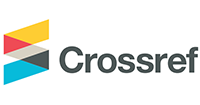Comparison between the weight of iconicity in orofacial reading by deaf people learning Libras and listeners during the pre-literacy phase
DOI:
https://doi.org/10.31513/linguistica.2018.v14n3a25508Keywords:
Arbitrariness, iconicity, pre-literacy, orofacial reading, letter/sound matching, deaf children.Abstract
This article discusses the topic of linguistic iconicity-arbitrariness (Saussure, 1916) concerning children during pre-literacy. Before explicit literacy instruction takes place, the child may wonder how to decode the grapheme-phoneme relationship and one of the hypotheses nurtured sometimes is iconic in character: there is a pairing between the size of the written word and the object it represents (PIAGET, 1962). Studies demonstrate that children from 3 to 9 months of age, during prespeech phase, are already able to understand many words and even pseudowords generated in a test environment and therefore not iconic (LIMA, 2009 (2006). However, for deaf individuals, who use LIBRAS as L1, which is admittedly a more iconic language, what default pairing strategies are used before formal instruction? This is the question that the present study seeks to answer. An experimental test was designed to verify the preference of deaf and listening participants in the correct pairing of one of two pseudo words to a lip movement video. The objective was to verify if iconic factors weigh more significantly for the deaf participants.
---
DOI: http://dx.doi.org/10.31513/linguistica.2018.v14n3a25508
Downloads
Published
Issue
Section
License
Authors who publish in the Revista Linguí∫tica agree with the following terms:
The authors maintain their rights, ceding to the journal the right to first publication of the article, simultaneously submitted to a Creative Commons license permitting the sharing with third-parties of published content as long as it mentions the author and its first publication in the Revista Linguí∫tica.
Authors may enter into additional agreements for the non-exclusive distribution of their published work (for example, posting in online institutional or non-profit repositories, or book chapters) so long as they acknowledge its initial publication in the Revista Linguí∫tica.

The journal Revista Linguí∫tica is published by the Post-Graduate program in Linguistics of UFRJ and employs a Creative Commons - Attribution-NonCommercial 4.0 International (CC-BY-NC).









